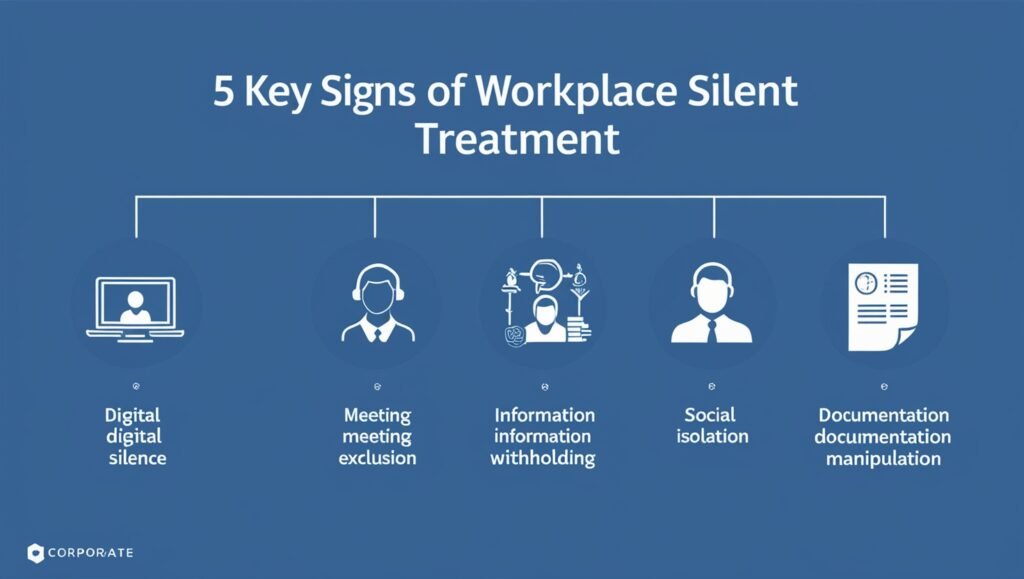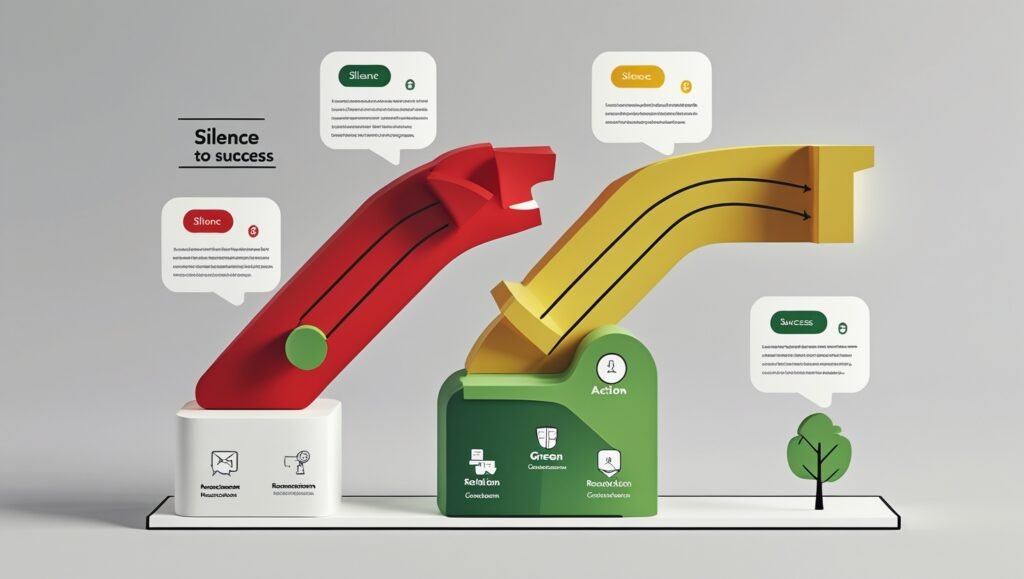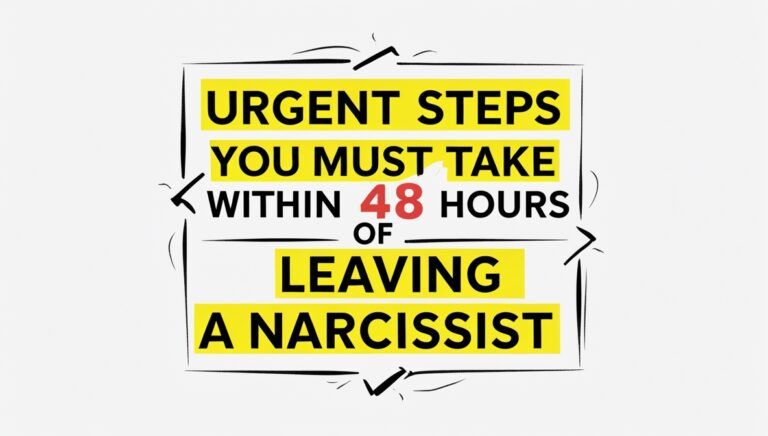10 Signs of silent Treatment At Workplace (How To deal)
The meeting room falls silent as you enter. Your emails go unanswered for days. Coworkers suddenly stop their conversation when you approach. Sound familiar? You might be experiencing the silent treatment at work – a form of workplace bullying that can impact your productivity, mental health, and career growth.
Silent treatment at workplace affects up to 30% of professionals, yet many struggle to identify and address it effectively. Whether it’s coming from a manager, colleague, or team member, this passive-aggressive behavior can create a toxic work environment and hinder professional relationships. In this guide, you’ll discover real silent treatment examples at workplace, learn to spot the warning signs, and master practical solutions to handle this challenging situation professionally.
What makes this issue particularly complex is that silent treatment often masquerades as “professional distance” or “busy schedules,” making it difficult to address without seeming oversensitive. But don’t worry – by the end of this article, you’ll have the tools and confidence to tackle workplace silent treatment head-on.
What is Silent Treatment at Work?
At its core, workplace silent treatment involves deliberately ignoring, excluding, or minimizing communication with a coworker. Unlike regular conflicts, this passive-aggressive behavior creates an invisible barrier that’s often harder to address than direct confrontation.
Common Causes:
- Power dynamics and control
- Unresolved workplace conflicts
- Personal insecurities or threatened feelings
- Cultural communication differences
- Poor leadership or management skills
Psychological Impact: The silent treatment at workplace triggers similar brain responses as physical pain. Studies show this behavior can:
- Increase workplace anxiety and depression
- Lower self-esteem and confidence
- Reduce job satisfaction
- Create feelings of rejection and isolation
Impact on Team Dynamics: When silent treatment examples at workplace surface, they create ripple effects:
- 25% decrease in team productivity
- Higher turnover rates
- Breakdown in collaboration
- Poor information sharing
- Increased workplace errors
- Toxic company culture development
Recognizing these impacts is crucial for addressing silent treatment at work effectively. The behavior not only affects individual performance but can spread through teams, creating lasting damage to organizational health.
10 Clear Signs of Silent Treatment at Workplace

Let’s get into the 10 signs of silent treatment at work
1. Complete Communication Shutdown
In the Office When colleagues deliberately avoid basic interaction, it becomes a glaring sign of silent treatment at workplace. You’ll notice them taking different routes to their desk, keeping their eyes glued to their phones in common areas, and maintaining rigid postures when forced to share space.
This behavior extends beyond mere busy schedules – it’s a calculated effort to minimize any form of acknowledgment. For instance, they might suddenly become absorbed in their phone when you enter the break room or pretend to take calls when you approach their desk.
2. Digital Communication Goes Cold
In today’s workplace, digital silent treatment can be just as damaging as physical avoidance. Watch for patterns like consistently delayed responses to your emails while the same person replies promptly to others.
They might read your messages instantly but wait hours or days to respond, often with minimal, formal replies. Another telltale sign is being mysteriously removed from group chats or finding yourself the only team member not copied on important email threads.
3. Strategic Meeting Exclusions
Pay attention to suspicious patterns in meeting schedules and participation. A colleague giving you the silent treatment might consistently schedule important discussions during your known lunch break or regular client calls.
When you do attend meetings, your contributions are met with silence or quick dismissals. You might also notice being “accidentally” left off meeting invites for projects you’re directly involved in, only to discover decisions were made without your input.
4. Information Withheld and Communication Barriers
Crucial project updates mysteriously bypass you while reaching every other team member. You might discover important deadline changes during casual conversations, realizing you were the only one not directly informed.
In more severe cases, colleagues intentionally withhold resources needed for your work, forcing you to spend extra time tracking down information. This pattern of selective information sharing creates unnecessary workflow disruptions and can significantly impact your performance.
5.Professional Sabotage Through Silence
Your contributions suddenly go unacknowledged in team settings. That brilliant solution you proposed in last week’s meeting? Someone else presents it as their own idea today. Work gets reassigned without your knowledge, and feedback about your performance reaches your supervisor before coming to you.
These subtle yet damaging tactics not only undermine your professional standing but also create a paper trail that excludes your involvement in key projects.
6. Social Isolation Tactics at Work
The workplace social fabric starts unraveling around you. Team lunches happen without your knowledge, and you learn about after-work events through social media posts.
Conversations abruptly halt when you approach the coffee machine, replaced by awkward silences or sudden topic changes. This social exclusion extends beyond mere oversight – it’s a calculated effort to create professional isolation.
7. Hostile Body Language and Non-verbal Cues
Watch for exaggerated physical responses to your presence. Silent treatment at workplace often manifests through body language – dramatic sighs when you speak, turning away during your presentations, or creating physical barriers in shared spaces. These non-verbal cues send clear messages of rejection while maintaining plausible deniability.
8. Task-Related Exclusion Patterns
New projects consistently launch without your involvement, despite your relevant expertise. Resource requests go unanswered, and collaboration invitations meet dead silence. You might find yourself last to receive new training opportunities or technology upgrades. This systematic exclusion from work-related activities creates a pattern that can stall career growth and professional development.
9. Meeting Room Power Plays
The conference room becomes a stage for subtle power dynamics. Colleagues talk over your presentations, dismiss your suggestions without discussion, or engage in side conversations during your speaking time. In virtual settings, they might conveniently experience “technical issues” during your presentations or leave meetings early when you’re scheduled to present.
10.Documentation and Paper Trail Manipulation
Every email interaction becomes a carefully orchestrated paper trail. You notice an increase in unnecessary CC’d emails to supervisors for basic communications, while important project documents mysteriously lack your contributions. The tone in written communications shifts to become overly formal compared to exchanges with other team members.
Shared documents get updated without your knowledge, and your name disappears from project documentation where you played a key role. This deliberate manipulation of the professional paper trail creates a distorted record of your involvement and contributions.
For example, meeting minutes might omit your key suggestions, or project timelines might not reflect your completed deliverables. This pattern of documentation manipulation serves both to isolate you professionally and create a skewed historical record of your workplace contributions.
Unconventional Ways to Handle Workplace Silent Treatment

To address silent treatment on workplace you need unconventional ways because conventional ways often get fail:
1. The Reverse Psychology Play
Turn the tables by becoming exceptionally visible. When facing silent treatment at workplace, amplify your professional presence. Book the conference room next to their desk for virtual calls. Send project updates in company-wide channels. Host lunch-and-learn sessions about your expertise. This approach forces acknowledgment while maintaining professionalism. Think of it as professional peacocking – impossible to ignore.
2. The Digital Breadcrumb Strategy
Instead of traditional documentation, create an undeniable digital presence. Start a project wiki that becomes the go-to resource. Share your solutions on company Slack channels. Record video updates of your contributions. When someone gives you the silent treatment, they’re actually amplifying your digital footprint. Every ignored email becomes a timestamp of their behavior.
3. The “Kill Them With Competence” Approach
Transform the silence into your stage. While they’re busy ignoring you, revolutionize a workflow process. Launch that innovative project they “forgot” to include you in – but make it better. Submit proposals directly to senior management. Their silence becomes your spotlight. Remember: success is the best revenge, especially when it comes with a promotion.
4. When to Pull the HR Trump Card
Don’t wait for traditional red flags. Create a compelling story with data visualization of communication patterns. Present HR with a comparison chart of response times between team members. Show the impact on project timelines with actual metrics. Transform your case from “they’re ignoring me” to “here’s how this behavior costs the company money.”
5. The Immunity Building Protocol
Instead of standard prevention, build a workplace reputation so solid it’s bulletproof. Create dependence on your expertise. Establish direct lines with key stakeholders. Make your contributions so valuable that silence becomes their loss, not yours. This isn’t just prevention – it’s professional power-building.
Turning Workplace Silent Treatment into Professional Growth
The silent treatment at workplace isn’t just a challenge – it’s an opportunity to elevate your professional game. From experiencing total communication blackouts to strategic meeting exclusions, you now have the toolkit to transform these obstacles into career catalysts.
Remember:
- Document strategically, not desperately
- Make silence your spotlight
- Build influence through excellence
- Transform digital paper trails into success stories
- Use metrics to quantify impact
Your Next Steps:
- Audit your current workplace dynamics this week
- Choose one unconventional strategy to implement tomorrow
- Start building your digital influence portfolio
- Map key stakeholders outside your immediate team
- Calculate the business impact of improved communication
Ready to Take Action? Don’t let workplace silent treatment define your career trajectory. Download our workplace communication tracker template to start documenting patterns effectively. Share your success stories of overcoming workplace silent treatment – your experience could help others tackle similar challenges. Contact us if you need any help or guidance.
Remember: The best response to silence isn’t more silence – it’s strategic visibility that commands respect and drives results.







